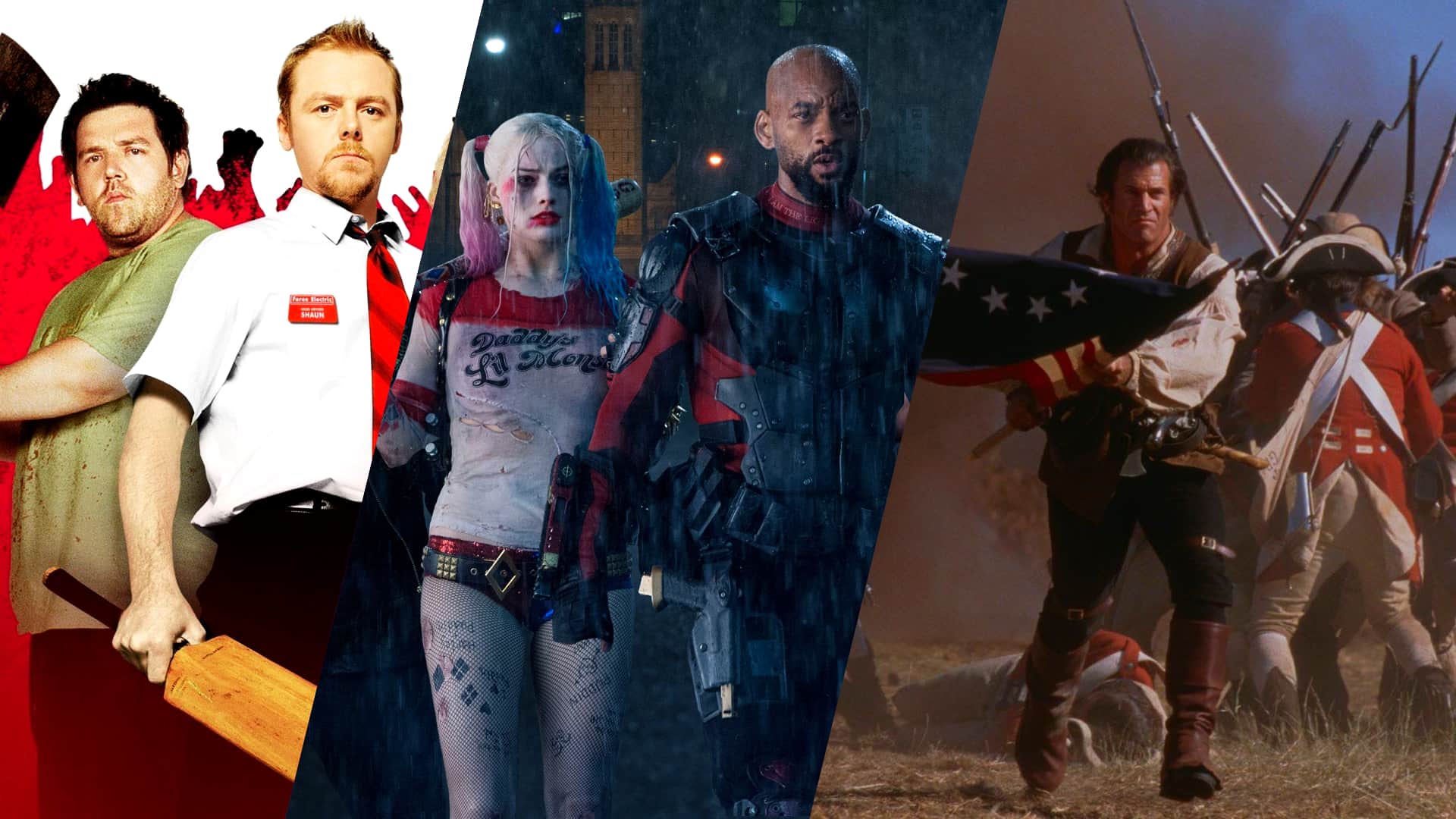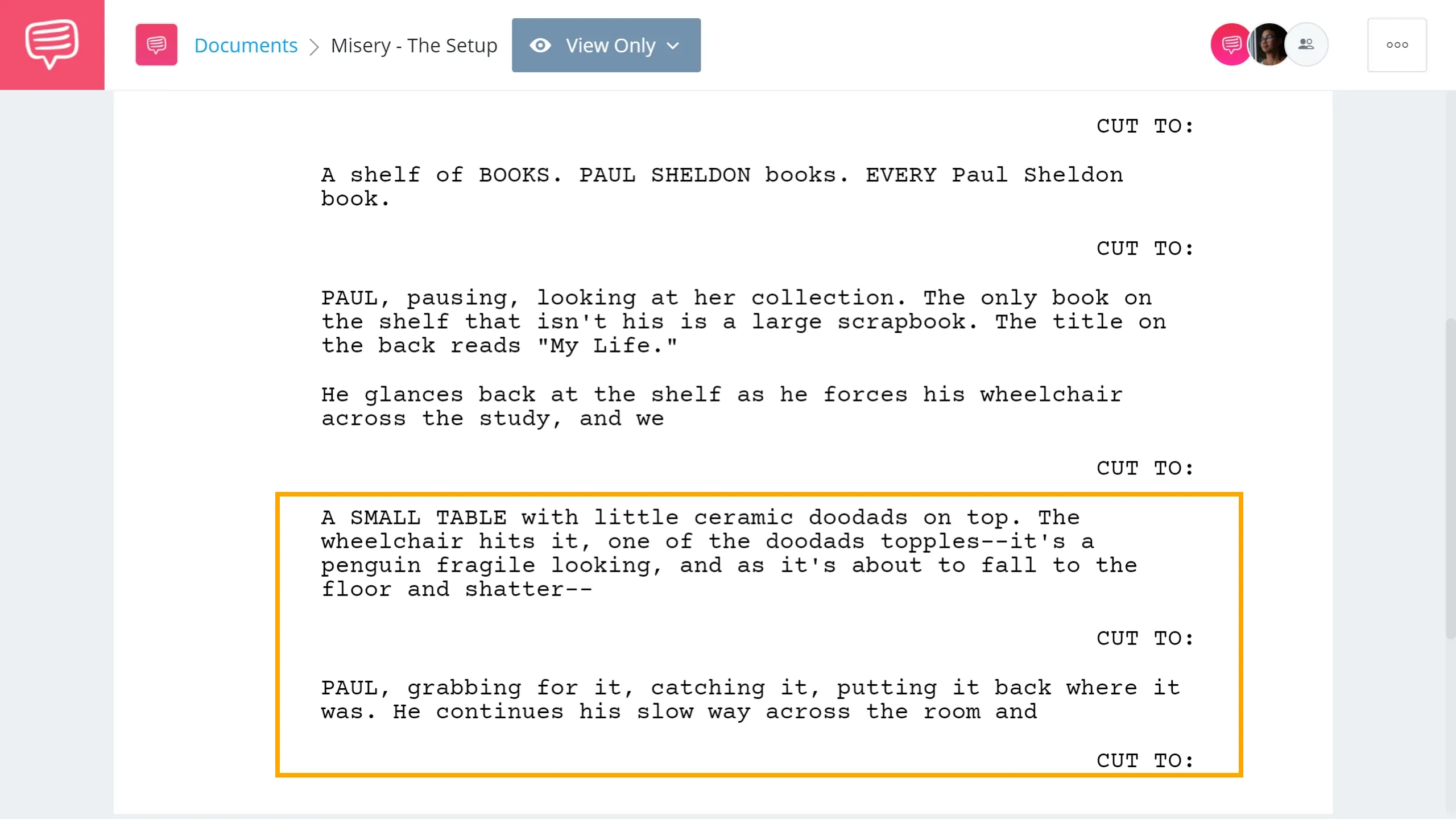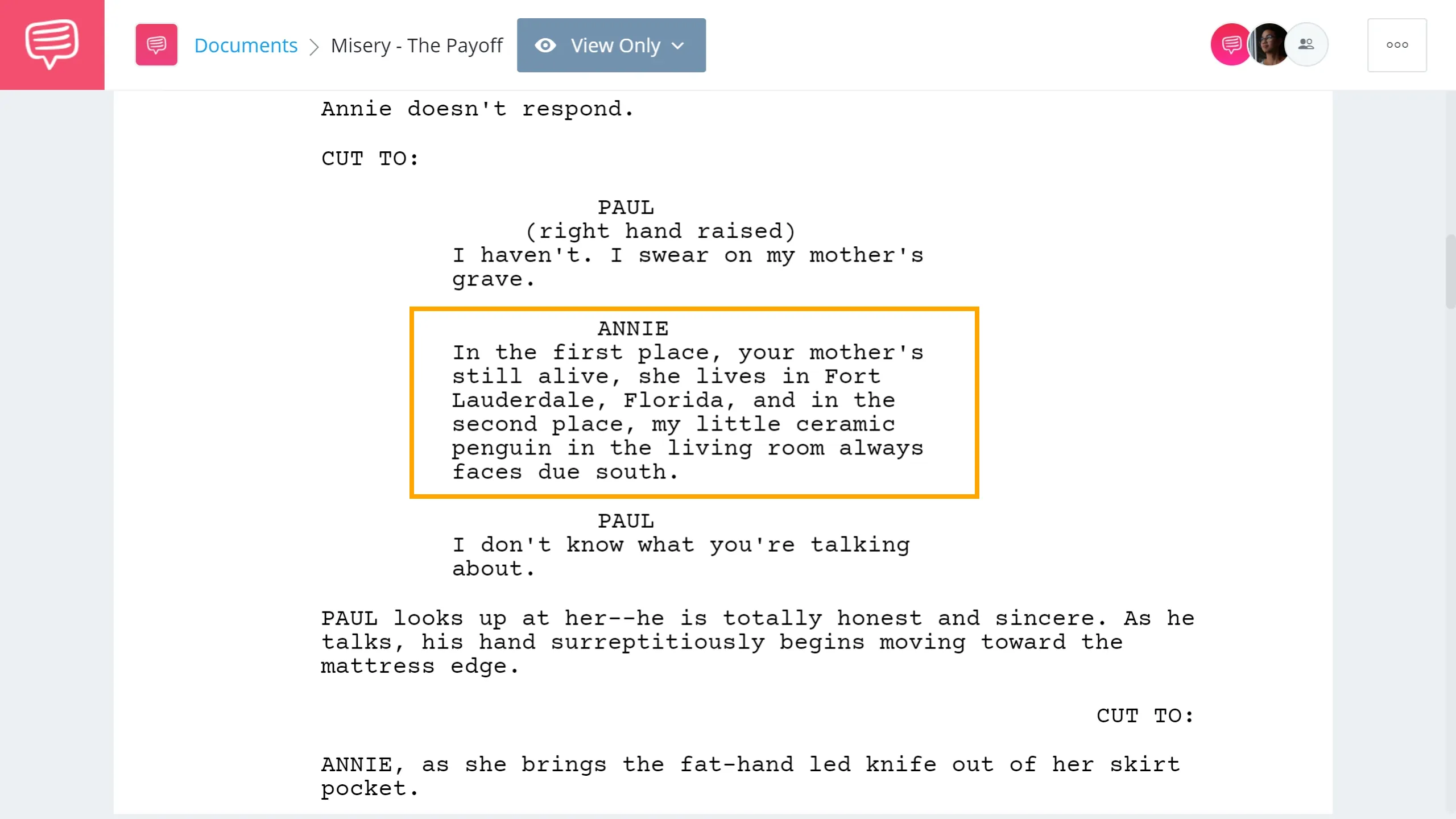What is Chekhov’s gun? What are setups and payoffs? The concepts are interconnected, and all three should be included in any and all screenwriting endeavors. We will provide working definitions, take a look at illustrative examples used in great films, and discuss how to best incorporate the practice into your own writing. Before we jump into the benefits of setups and payoffs, let’s start by defining Chekhov’s gun.
Chekhov gun
First, let’s define Chekhov’s gun
Understanding the theory behind Chekhov’s gun is paramount in understanding how to properly execute setups and payoffs. If you encounter any other unfamiliar writing or film terms, our ultimate guide to filmmaking terminology is a helpful guide for looking things up.
CHEKHOV'S GUN DEFINITION
What is Chekhov's Gun?
Chekhov’s gun is a dramatic principle which states that if a gun is seen in the first act, it should be used by the third act in a story following a traditional three-act structure. The inverse is also true, a gun fired in the third act should be established earlier on. Though the titular example applies to a weapon, the Chekhov’s gun principle can be applied to any ingredient of a story. In broad terms, the Chekhov's-gun theory posits that every element within a piece of writing should contribute directly to the whole.
Chekhov’s law
- Coined by Russian playwright and author, Anton Chekhov
- If something is setup, it must be paid off, and vice versa
- A setup without payoff is called an unfired Chekhov’s gun
Chekhov’s law
Setups and payoffs
To put it simply, setups and payoffs are what the Chekhov’s gun theory looks like in practice. The setup is showing the gun in act one, and the payoff is firing it in act three. This same model can be applied to virtually any component of storytelling. Whether you notice them or not, the best writing for stage, screen, and literature all make frequent use of setups and payoffs.
The best setups don’t feel like setups in the moment but always do in retrospect. If a setup is too obvious, the audience may wind up one step ahead of the film, which is never a good thing.
How Chekhov’s law functions
Now that we have an understanding of setups, payoffs, and the Chekhov’s gun principle, let’s take a look at some examples.
Chekhov gun
Examples of Chekhov’s Gun
Chekhov’s gun is a core dramatic principle. If you are specifically looking for examples of it, you will find them everywhere you look. Every great film makes use of setups and payoffs to some degree as they are so deeply ingrained in the foundation of dramatic storytelling.
In Misery, which made it onto our list of the best Stephen King adaptations, Paul Sheldon accidentally creates a Chekhov’s gun when he places the ceramic penguin back facing the wrong direction…Chekhov's Gun • The setup in Misery
… Leading to the payoff 30 pages later when Annie Wilkes realizes Paul has been a “dirty birdy” and left his room. This leads to her punishing him in the film’s most iconic scene: the hobbling.
Chekhov's Gun • The payoff in Misery
Big Trouble in Little China, which made it onto our list of the best John Carpenter films, sets up a character trait at the very beginning of the film which pays off when our bumbling hero finally saves the day.
Jack Burton is a total fool of a protagonist but he has one redeeming trick: his fast reflexes. Without this opening scene to set up his fast reflexes…
Chekhov’s law: The setup
Then his lone heroic moment at the end of the film wouldn’t feel earned and would even feel out of character.
Chekhov’s law: The payoff
Within Die Hard alone, you can find countless examples of Chekhov’s gun. One of the reasons why the screenplay for Die Hard is so great is because of its masterful use of setups and payoffs. Find out where Die Hard ranks on our list of the greatest action films ever made.
Absolutely everything in Die Hard is smoothly set up in the first act of the film and then satisfyingly paid off once the bullets start flying. Conversely, you will not find a single unfired Chekhov’s gun in the entire film. And the best part is, none of these setups feel like setups until the payoff hits.
Act 1 Setup
A friendly flight passenger teaches John McClane how to combat jet lag by “making fists with his toes on the carpet”
Act 2/3 Payoff
John McClane spends the rest of the film barefoot, adding to the sense of danger and vulnerability.
Act 1 Setup
Holly turns down a framed photo of her and John.
Act 3 Payoff
Hans Gruber later uses that photo to identify the “cowboy” who has been giving him and his men trouble.
Act 1 Setup
Holly is given a Rolex watch as a company Christmas gift.
Act 3 Payoff
Hans Gruber grabs onto that very same watch to keep himself from plummeting to his death.
Something as simple as a watch on a character’s wrist may not technically need setting up in the first act, it could just be an element in a wardrobe breakdown, but the fact that it was set up makes this climax all the more thrilling because the audience has a dramatic investment in this wrist accessory.
The Rolex pays off
Even though all great films incorporate setups and payoffs, that doesn’t mean they are infallible. Plenty of mediocre and bad movies fail to properly follow Chekhov’s law, and even some great films miss the mark from time to time. Let’s dig into what happens when a film doesn’t properly setup or payoff.
What is Chekhov’s gun?
Unfired Chekhov’s gun examples
When a setup lacks a payoff or vice versa, it may be called an unfired Chekhov’s gun. This should be avoided at all costs. One unfired Chekhov’s gun might not be enough to ruin an entire film but it can be a blemish on an otherwise excellent motion-picture, and bad movies are rife with them.
Examples of unfired Chekhov’s guns
When payoffs are not earned and they seem to come out of nowhere, they no longer support the Chekhov’s gun dramatic principle and instead become examples of a deus ex machina.
A payoff without a setup is a deus ex machina, and a setup without a payoff is a waste of everyone’s time. You need both components working in tandem for this dramatic principle to fire on all cylinders.
Deus ex machina explained
Now that we’ve looked at plenty of traditional Chekhov’s gun examples, let’s take a look at an alternative way to twist the dramatic principle.
Reversing The Gun
Using Chekhov’s Gun for subversion
We’ve talked about fired Chekhov’s guns and unfired Chekhov’s guns, but there is still one more way to utilize the Chekhov’s law. Setups and payoffs are not just behind-the-scenes string pulling orchestrated by a screenwriter.
Audiences are able to register setups and payoffs, and Chekhov’s law is twisted at times to positive effect.
The murder-mystery genre uses Chekhov’s gun for subversion constantly. Without doing this, it would likely be too obvious who the killer is in many films. In the murder-mystery genre, this type of Chekhov’s gun subversion is known as a red herring; a clue, detail, or piece of information designed to lead the audience aware from the truth in order to prolong the unknown. The following video offers tips for writing satisfying red herrings.
Red Herring Explained • Subscribe on YouTube
Because audiences can clock when something is a setup, it is possible to use the Chekhov’s gun mechanism to subvert audience expectations. This is trickier to do than a standard setup and payoff, but when done right, the results can be thrilling or surprising.
Give your protagonist a useful tool, place them in a perilous situation where that tool could get them out of trouble… and then take that tool away from them and compound their peril.
This scene from Kiss Kiss, Bang Bang, one of Shane Black’s best movies, offers a perfect example of a Chekhov’s gun used for subversion.
Kiss Kiss, Bang Bang twists the Chekhov’s Gun mechanism
The Setup — Throughout Kiss Kiss, Bang Bang, our protagonist, Harry, is seen reading and carrying pulp detective novels.
The Payoff — At the end of the film, when Harry gets shot, the book is over his heart to stop the bullet.
The Subversion — But, wait a second, the book didn’t work. The bullet went straight through the book and still hit him.
Setups and payoffs should always be on your mind when writing a screenplay. And, when you’re ready to start your next screenplay, you can do it using StudioBinder’s screenwriting software. It’s free to get started.
up next
How writers use subtext
Now that you know what setups and payoffs are and how to use Chekhov’s gun, you can begin incorporating them into your own writing. Another important element to incorporate when writing a screenplay is subtext. What is subtext? We will provide a definition and look at examples from great films, up next.
Up Next: Subtext explained →


